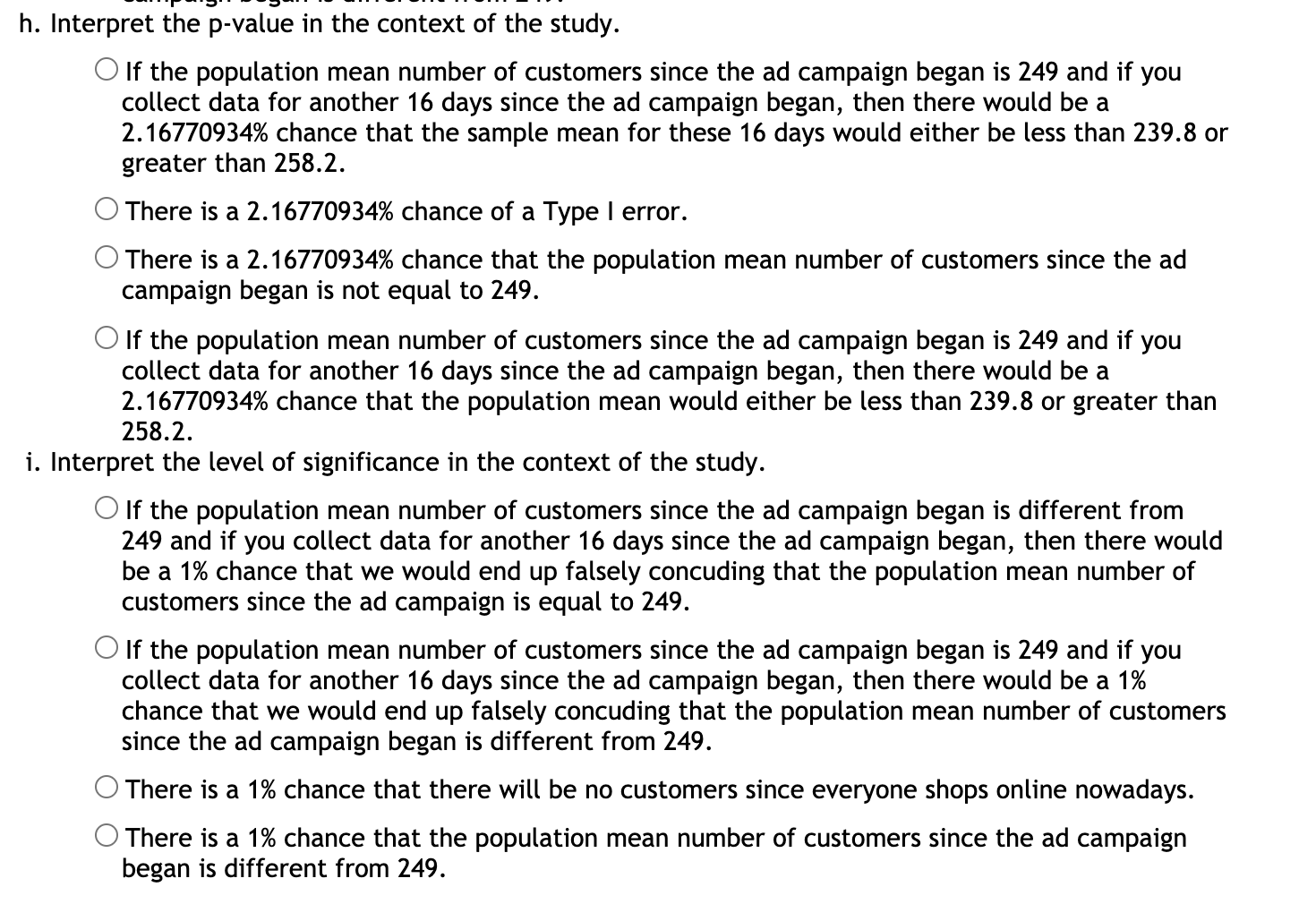Can you please help me with the whole question?
0 Question 28 v > Before the furniture store began its ad campaign, it averaged 249 customers per day. The manager is investigating if the average has changed since the ad came out. The data for the 16 randomly selected days since the ad campaign began is shown below: 239, 263, 254, 232, 260, 244, 234, 259, 263, 271, 268,233, 265, 256, 264, 276 Assuming that the distribution is normal, what can be concluded at the a = 0.01 level of significance? a. For this study, we should use z-test for a population proportion v b. The null and alternative hypotheses would be: c. The test statistic = C] (please show your answer to 3 decimal places.) CI. The p-value = [3 (Please show your answer to 4 decimal places.) e. The p-value is a f. Based on this, we should the null hypothesis. g. Thus, the final conclusion is that O The data suggest the population mean is not significantly different from 249 at a = 0.01, so there is sufficient evidence to conclude that the population mean number of customers since the ad campaign began is equal to 249. O The data suggest that the population mean number of customers since the ad campaign began is not significantly different from 249 at a = 0.01, so there is insufficient evidence to conclude that the population mean number of customers since the ad campaign began is different from 249. O The data suggest the populaton mean is significantly different from 249 at a = 0.01, so there is sufficient evidence to conclude that the population mean number of customers since the ad campaign began is different from 249. __....'__..=.. .__=_... . . ._. _.._ . h. Interpret the p-value inthe context of the-study. Q If the population mean number of customers since the ad campaign began is 249 and if you collect data for another 16 days since the ad campaign began, then there would be a 21677093496 chance that the sample mean for these 16 days would either be less than 239.8 or greater than 258.2. 0 There is a 11677093496 chance of a Type I error. 0 There is a 11677093496 chance that the population mean number of customers since the ad campaign began is not equal to 249. Q If the population mean number of customers since the ad campaign began is 249 and if you collect data for another 16 days since the ad campaign began, then there would be a 2.1677093496 chance that the population mean would either be less than 239.8 or greater than 258.2. i. Interpret the level of significance in the context of the study. 0 If the population mean number of customers since the ad campaign began is different from 249 and if you collect data for another 16 days since the ad campaign began, then there would be a 1% chance that we would end up falsely concuding that the population mean number of customers since the ad campaign is equal to 249. 0 If the population mean number of customers since the ad campaign began is 249 and if you collect data for another 16 days since the ad campaign began, then there would be a 1% chance that we would end up falsely concuding that the population mean number of customers since the ad campaign began is different from 249. 0 There is a 1% chance that there will be no customers since everyone shops online nowadays. 0 There is a 1% chance that the population mean number of customers since the ad campaign began is different from 249








